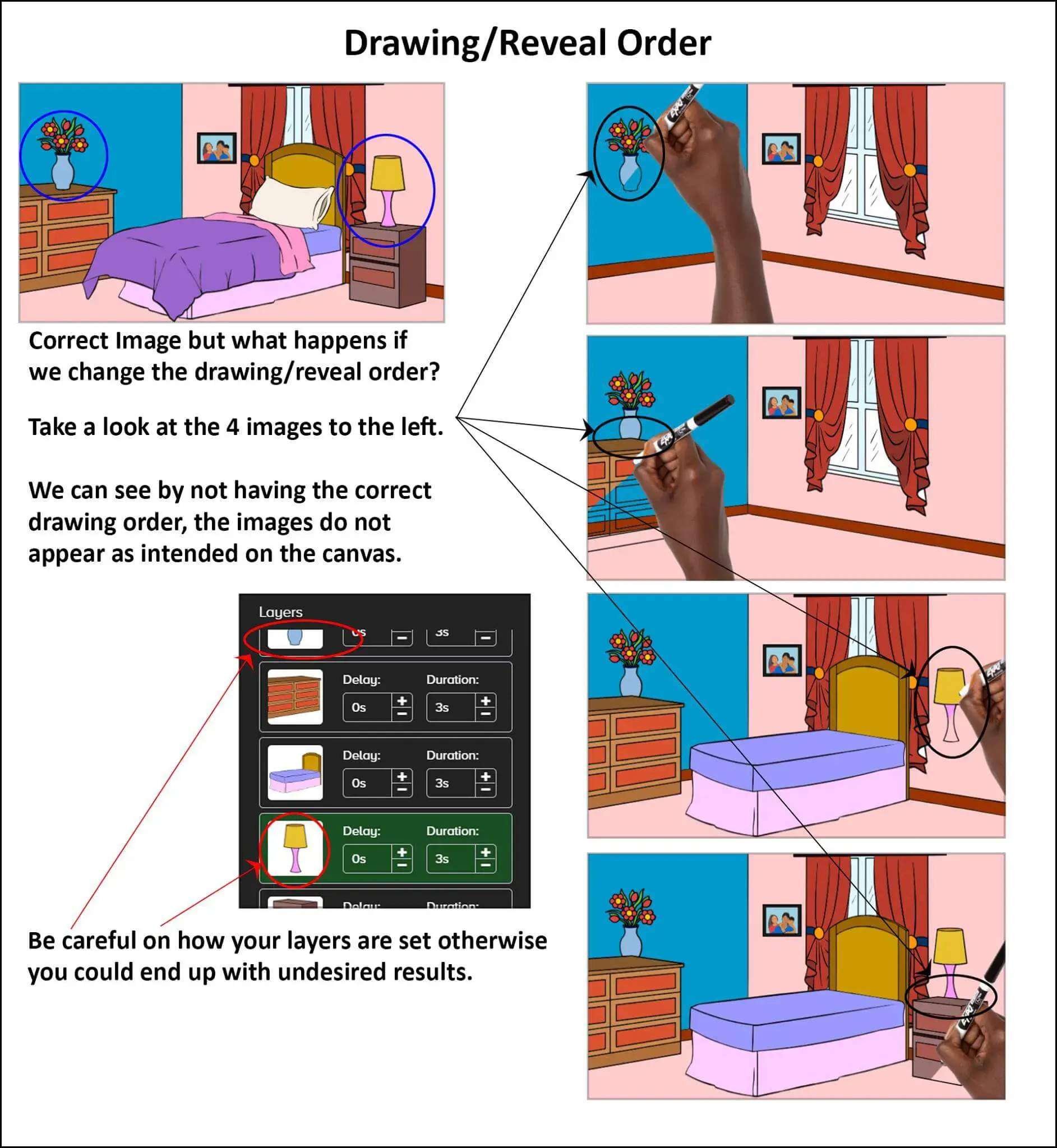Drawing Order
This document demonstrates some of the unexpected results that can happen within a doodle when the drawing or revealing order is not properly setup or sequenced properly within the layers section.
What is drawing order?
This is the order in which Doodly will reveal assets on the canvas from beginning to end.
How does Doodly draw assets?
Natively, the drawing order in Doodly happens according to the layers section; top to bottom, one asset at a time in the assets layer.
Note: With more advanced tricks like you see in the SoloBoss Doodly Walkthrough, there are advanced skill level tricks that can be used to show more than 1 asset being revealed on the canvas at a time.
Doodly Beginner Video Tutorial: Doodly Walkthrough Full Version
OR
Doodly Beginner Video Tutorial: Doodly Walkthrough Chapter 01 –
Opening Doodly
Importance
The wrong order can make a doodle look out of order, effect the realism in a negative manner and put assets behind other assets providing an undesired effect.
Noticeable Drawing Order Mishaps
These are typically noticeable when attempting to provide a very detailed pseudo 2D/3D appearance in Doodly. A full room with furniture, an office with plants, a train station with people, etc.
Examples of Bad Drawing Order
- Revealing a lamp in the air or on the wall prior to the table or stand for which it is to be resting.
- Showing a person sitting prior to showing the object for which they are to be perched.
Note: Attention to detail for the small things makes for a better viewer experience. Ensuring the proper drawing order will provide allowance for more believable doodles no matter what the intention for the production.
Viewer Commenting Tip
On the opposite side of the coin, if it’s more comments on the doodle we are seeking, we can purposely place items out of the proper drawing or revealing sequence because viewers will be really quick to comment on the mistake. Read the comments section for my Most Common Beginner Mistakes video tutorial where I took the time to purposely place Common Beginner Mistakes throughout the entire video.
- Doodly Beginner Video Tutorial: Common Beginner Mistakes



